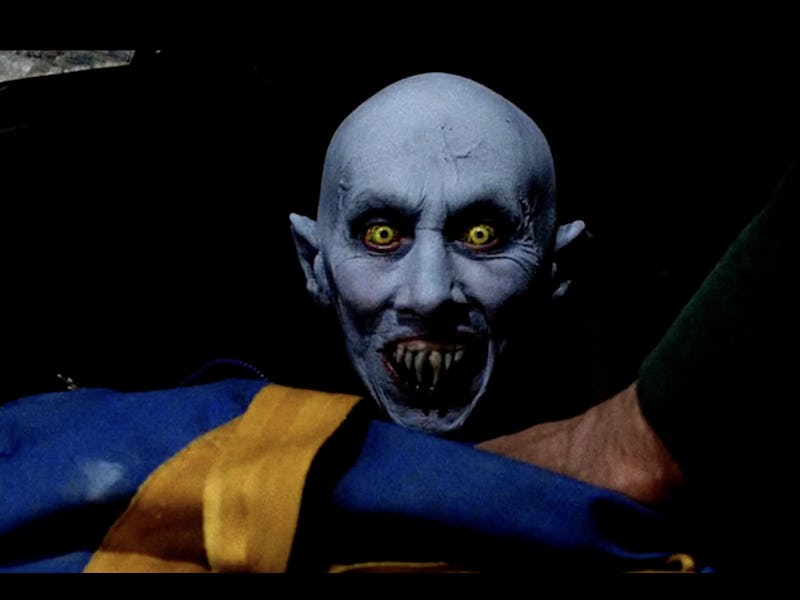A Forgotten Stephen King Thriller Remains Secretly Brilliant
Forget ghosts and ghouls. The real terror comes from living before smartphones.

With the new Salem's Lot adaptation one of many vampire flicks to hit theaters in the last few years, you’d be forgiven for assuming that Stephen King’s 1975 novel was just another yarn about bloodsuckers. But King’s book took the dusty, almost quaint monsters, dropped them into the modern world, and made them terrifying for arguably the first time since Richard Matheson published his classic I Am Legend in 1954.
King was just starting to become the formidable cultural presence he is today, but his tale of a small, isolated Maine town overrun by vampires was popular enough that plans to turn it into a movie were underway almost as soon as it was published. But that idea soon ran up against the novel's structure: at more than 400 pages, with dozens of colorful characters, King painted a granular, realistic vision of a rural town that was all but impossible to distill down to 120 minutes of screentime. So producer Richard Kobritz and screenwriter Paul Monash pivoted to the miniseries format, hoping an extra hour would give them time to properly develop the people of Jerusalem’s Lot. The result was a two-part, three-hour adaptation (plus an hour of commercials) that premiered on CBS on November 17, 1979.
With Texas Chain Saw Massacre director Tobe Hooper at the helm and a cast that included David Soul, Bonnie Bedelia, James Mason, Lew Ayres, and Fred Willard, Salem’s Lot managed to capture the tone and atmosphere of King’s book even as the script condensed the structure and characters. Hooper, a long way from Chain Saw’s guerilla production values and nihilistic nightmare vision, created several eerie sequences, despite having to limit the bloodshed for network TV. And King’s sense of community — of people’s lives intersecting in small, sometimes scandalous ways — is present, even if the relatively compact length accelerates the emptying of the town.
Largely faithful in spirit to King’s book, and pretty scary for its time, Salem’s Lot remains the definitive version of the novel, despite another miniseries adaptation in 2004 and this year’s feature film dropped on Max. That’s partly because the miniseries was very much of its late ‘70s era in how refreshing and competent it felt.
For one thing, King himself was still a fresh quantity; although Brian de Palma’s hit adaptation of Carrie had been released three years earlier and Stanley Kubrick’s The Shining was on the way, the real deluge of King adaptations, which varied wildly in quality and success, was still a good four years in the future. King himself was still only publishing one book a year. He would begin a long stretch of publishing two to three books a year around the same time the film adaptations ramped up, making him a much more pervasive pop culture presence.
This is why parents no longer let their kids run around unsupervised.
The miniseries also came at the tail end of a decade in which horror flourished almost as much on the small screen as it did in theaters. Made-for-TV movies like The Night Stalker, Duel, Don’t Be Afraid of the Dark, Trilogy of Terror, and Frankenstein: The True Story were often as intense as the films being offered by rising stars like David Cronenberg, John Carpenter, and Wes Craven, with the latter two also working in TV. Salem’s Lot, based on a book by the hottest new name in terror and directed by a man with a subversive horror classic already under his belt, seemed like the crowning achievement of the medium’s genre run.
But there may be another reason why this first adaptation of King’s novel is held in higher regard than subsequent versions: it’s a product of an era before smartphones, the internet, connectivity, and GPS, when the idea that people could disappear in a small town off the beaten track was much more plausible than it is now. The miniseries effectively captured the flavor of living in such a town thanks to the script giving just enough time to its supporting characters and the simplicity of their lives, a feat other versions have glossed over. And then it began to toy with them.
The 2004 adaptation was set in the present, bringing more of a modern edge to the proceedings (literally everyone has some trauma in their closet), while the Max version, at 114 minutes, is too short to nail down any real sense of the town at all. We’ve also simply seen vampires over and over again since 1979, whether the tone is more Twilight or 30 Days of Night. But the 1979 version of ‘Salem’s Lot was there first, at a time when you could still believe that an entire town might just vanish.